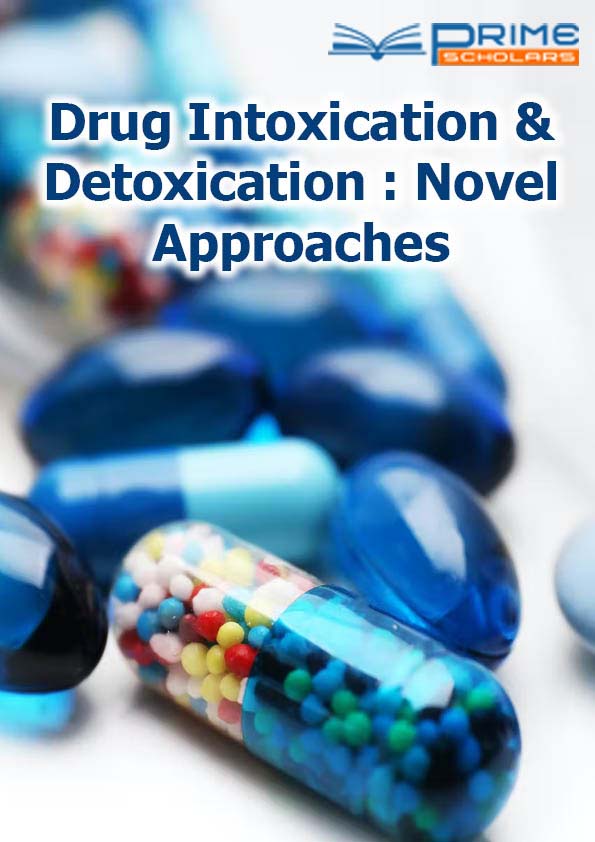Perspective - (2025) Volume 6, Issue 2
Exploring the Power of Nanoparticles in Drug Delivery: Revolutionizing Medicine
Akira Makoto*
Department of Drug Delivery, Toyo University, Bunkyo, Japan
*Correspondence:
Akira Makoto, Department of Drug Delivery, Toyo University, Bunkyo,
Japan,
Email:
Received: 14-May-2024, Manuscript No. DIDNA-24-19861;
Editor assigned: 16-May-2024, Pre QC No. DIDNA-24-19861 (PQ);
Reviewed: 30-May-2024, QC No. DIDNA-24-19861;
Revised: 13-Jun-2025, Manuscript No. DIDNA-24-19861 (R);
Published:
20-Jun-2025, DOI: 10.36648/DIDNA.6.2.52
Description
In the realm of modern medicine, the quest for more efficient and targeted drug delivery systems has led researchers to delve into the fascinating world of nanoparticles. In this article, we will explore the remarkable potential of nanoparticles and how they are revolutionizing the landscape of medicine. Nanoparticles are incredibly small particles with unique properties due to their size and surface area. At the nanoscale, materials often exhibit novel physical, chemical and biological characteristics that differ from their bulk counterparts. One of the most promising applications of nanoparticles is in drug delivery. Traditional drug delivery methods often suffer from limitations such as poor solubility, low bioavailability and nonspecific targeting, leading to suboptimal therapeutic outcomes and potential side effects. Nanoparticles offer a solution to these challenges by providing precise control over drug release, enhanced stability, and targeted delivery to specific cells or tissues. Nanoparticles can be engineered to selectively accumulate in diseased tissues or cells, minimizing off-target effects and maximizing therapeutic efficacy. Nanoparticles can be designed to release drugs in a controlled manner, allowing for sustained or pulsatile drug delivery. This controlled release kinetics can optimize drug concentrations at the site of action and improve patient compliance. Nanoparticles can protect drugs from degradation and premature clearance in the body, prolonging their circulation time and enhancing their stability. This improved stability ensures that therapeutic agents reach their intended targets intact, increasing their effectiveness. Nanoparticles can be functionalized with ligands, antibodies or other targeting moieties to achieve specific interactions with biological molecules or cell receptors. Nanoparticles can be fabricated from a variety of materials, including polymers, lipids, metals and inorganic substances, offering flexibility in design and formulation.
This versatility allows researchers to tailor nanoparticles to suit specific drug properties and delivery requirements. Nanoparticle-based drug delivery systems have shown promise in treating a wide range of diseases, including cancer, infectious diseases, inflammatory disorders and neurological conditions. In oncology, for example, nanoparticles can deliver chemotherapeutic agents directly to tumour cells while minimizing damage to healthy tissues, thereby reducing side effects and improving patient outcomes. In infectious diseases, nanoparticles can deliver antimicrobial agents to targeted sites of infection, enhancing their efficacy and reducing the development of drug resistance. Similarly, in inflammatory disorders such as rheumatoid arthritis, nanoparticles can deliver anti-inflammatory drugs to inflamed joints, providing localized relief and minimizing systemic side effects. Despite their tremendous potential, nanoparticlebased drug delivery systems face several challenge, including scalability, biocompatibility and regulatory approval. Researchers are actively working to address these hurdles by optimizing nanoparticle synthesis methods, improving safety profiles and conducting rigorous preclinical and clinical studies. Looking ahead, the field of nanoparticle-based drug delivery holds immense promise for advancing personalized medicine, improving patient outcomes and tackling some of the most pressing healthcare challenges of our time. Nanoparticles represent a paradigm shift in drug delivery, offering unprecedented control, precision and versatility in the way we administer therapeutics. From targeted cancer therapy to personalized medicine, the potential applications of nanoparticle-based drug delivery systems are virtually limitless. By harnessing the power of nanotechnology, we are ushering in a new era of medicine where treatments are tailored to individual patients, diseases are tackled with pinpoint accuracy and the possibilities for improving human health are truly endless.
Citation: Makoto A (2025) Exploring the Power of Nanoparticles in Drug Delivery: Revolutionizing Medicine. Drug Intox Detox:
Novel Approaches. 6:52.
Copyright: © 2025 Makoto A. This is an open-access article distributed under the terms of the Creative Commons Attribution
License, which permits unrestricted use, distribution, and reproduction in any medium, provided the original author and source
are credited.
